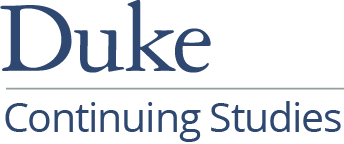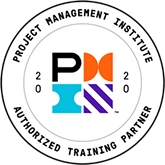Listening as a Leadership Skill
 These are exciting times!
These are exciting times!
Technology has shrunken physical distances, practically dissolved national borders, and — instantaneously and efficiently — connected people to each other worldwide. Yet, this is not so in interpersonal space, where people often still feel a great distance from each other. And with the rise of the global workforce come new challenges to communication.
Organizations rise or fall according to the quality of their interactions and relationships. And listening is really the key. Listening promotes better functioning teams and higher morale. It increases sales and customer loyalty. Listening even reduces stress, both in individuals, and in the organization. And ultimately, listening is an essential competency for remaining competitive.
Yet the dominant mode of listening is private, not shared; distracted, not focused; and contained, not engaging. And frustration and disappointment stemming from this type of listening are keeping business interactions from achieving desired results. Nearly every manager who attends my “Listening to Lead” workshops voices irritation over problems they have with listening.
In conversations and meetings, they can’t control their impatience to get to the point and move on. Their attention spans are short and getting shorter. They get easily distracted and lose focus, miss key information, and are forced to play catch-up. They don’t acknowledge one another’s feelings. And their inability to retain information for future reference stymies efforts to meet expected levels of individual, team and organizational excellence.
This means that their conversations are largely unproductive, satisfaction and value levels decline needlessly, and they fail to consistently achieve trusting relationships with co-workers and employees. They are frustrated, unhappy and embarrassed.
And that’s not all. Poor listening comes with a high price tag. It accounts for business losing billions of dollars each year to missed communication, misunderstandings and duplication of effort.
Why are so many people in business today unable to listen properly? How can they transform themselves as listeners? What does leadership in listening mean, and what can it achieve?
Listening in the modern world
Our planet is now an almost make-believe world of instant messaging and unlimited access to information from anywhere, anytime. Our hurry-up lives have made multi-tasking the order of the day. And if conversational listening was a struggle before, it now poses an even greater challenge. Good listening skills are fast becoming — if they aren’t already — an endangered species.
Sure, we have all heard the saying, You learn more by listening than by speaking, and the oft-repeated, That’s why we have two ears and one mouth. Yet most of us don’t find it easy, in one-to-one and small-group interactions, to pay attention to what others are saying and to empathize with them. And even when we do, feedback and response are in short supply. How satisfying was your last customer-service call, for example?
The dramatic strides we have made — and continue to make — in information-management efficiency and effectiveness suggest a promising future. But our listening practices, in comparison, are rooted in the past. We still listen according to old habits. In fact, the quality and efficiency of conversational listening have been seriously diminished. Thank the traditional, one-way lecture method of teaching, inactive listening to TV, and passive participation in front of computer screens.
There are a few exceptions. A small domestic case in point: During a break in one of my listening seminars, a fellow came over to me and said, “You know, I always thought that when you listen, you just sit there. But when I think of the people I enjoy talking to — they’re expressive listeners.”
But typically, too many managers still operate within a narrow, traditional framework that views listening’s primary (or only) job to be understanding what another is saying, and the listener to be essentially a sort of “absorbing head.” To get more out of listening, we need to shift our mind-set to reflect the fact that in the modern workplace, collaboration and teamwork are the preferred models of decision-making, problem-solving and achieving goals.
Most important, managers in the listener role need to see themselves, and have others see them, as equally empowered and empowering conversational partners who share a commitment to mutual understanding.
Listening and conversation
Listening is arguably the most talked about but under-delivered business skill. The problem is that in so many instances managers’ intentions to listen to others are, at best, only minimally fulfilled. Anyone who has participated in a business conversation for even a few minutes has experienced the classic reciprocity failure: the obvious lack of reaction and acknowledgment from the listener.
The staff meeting is a common example: Participant comments and questions are often given short shrift by the meeting leader. The performance appraisal is another: The manager’s frequent lack of skill in questioning and responding produces cagey conversation instead of genuine dialogue, and any problems remain unaddressed. In coaching and mentoring as well, managers often try to control or micro-manage employees’ behaviors instead of listening and responding to them, which keeps subordinates from developing independent thinking skills and self-assurance.
In so many daily business encounters, managers quickly lose their initial intention to listen, along with their opportunity to influence and lead. At the same time, by not feeling fully received and understood, their speaking-partners/employees don’t realize their value expectations either. Many of us seem locked inside our own heads, unable to get past ourselves.
Why are we so frugal with our feedback? Why are we so reluctant to respond?
The distorting lens of tradition
Convention dictates that a listener’s job in conversation is basically to absorb the speaker's message. Many listeners thus see themselves as mere “consumers” of spoken information, their role as passive and compliant. Is it any wonder that most of us listen in relative obscurity? That we fail to integrate feedback—including emotional responses we might have—into our conversations? If we are “invisible” and voiceless in conversation, we are more likely to be misunderstood by our speaking partner.
But as pervasive as the conventional wisdom is, it is based on an out-of-date perspective. There is something oddly unnatural about keeping legitimate feelings and reactions bottled up inside us. (Consider the difference between: understanding and being understanding, or between an interested listener and an interesting one.) Yet we are so deeply versed in this limiting legacy that we hardly provide even an occasional comment on the speaker’s narrative. So, this constrained vision of listening persists, robbing us of the benefits of full-fledged, convergent listening. Partial, one-sided listening exacts a high toll on conversational quality and coherence, and also reflects, the limited importance a listener accords himself.
Is there a better way to align the interests of listeners and speakers so that everyone benefits? Yes. But to do so will require re-imagining the listening experience within a relational framework by applying different sensibilities and values to it. And this may undermine some cherished beliefs about listening. Still, if more trusting relationships and productive conversations are the goal, it is not enough to appear to be listening. There’s also the matter of proving it.
Listening as influence
The challenge—and opportunity—is to recognize that speakers also have needs. For example, they rightly want to know whether we have received their message and how we feel about it. And they are more likely to communicate authentically when we manifest our listening more openly.
The word “proactive,” although perhaps overused, has an important application here. Proactive means taking the initiative, acting by design or with deliberate intent, as opposed to “reactive” or “inactive.” And it takes two forms: attitude and action.
With a proactive attitude, you come to a conversation prepared to listen. You commit to paying attention and observing the speaker closely (e.g., listening for clues on negotiating positions) to learn as much as you can.
Your actions are proactive when, instead of reacting reflexively to, say, a speaker’s demeaning remark or dismissive gesture, you respond with something like “That surprises me!” or “What makes you have that impression?” With more neutral responses, you remain fully present, focused and connected, instead of being defensive.
And proactive listening does more than close the communication loop. It helps reconnect us with the reason most of us engage in conversation in the first place: to be listened to and to know it. Proactive listening is attentive, engaging listening, and it accomplishes much more.
First, you take in more accurate information because you maintain a tight focus. Also, greater investment in response and feedback anchors you in the moment and intensifies the message. This boosts retention. (Listening passively, without responding, makes us more likely to forget vital information.)
Proactive listening makes a connection, gets people thinking and sparks some discussion. Open-ended questions (such as what? why? how? when?) that elicit more than a “yes” or “no” answer stimulate dialogue. Empathy jump-starts rapport. And acknowledging feelings and making an effort to understand facilitate speedier resolution of conflict.
We can also have more success in recruiting others to our viewpoints by asking, “What do you think?” and then really listening to legitimate concerns and alternatives. The conversation becomes relatively quick, and you get instant credibility, instead of simply stating the way something is or the way you want it to be. Understanding each other’s concerns and committing to each other’s successes build trust.
Successful listeners know that feedback turns talk into collaboration. And collaboration is the lens through which deeper mutual understanding is captured. In this way, you positively affect the direction, dynamic and depth of the conversation. Indeed, proactive listening is influential listening — it motivates your speaking partner to feel more at ease and to be more forthcoming. As a response-enabled manager, you then obtain more open, honest and meaningful information.
Meeting the challenges of global communication
As many point out, the workplace is becoming increasingly multicultural, and a global economy requires increased interaction with bosses, subordinates and co-workers in other countries. And in the future there will be greater interaction, with inevitable consequences for listening—and language—practices.
Incompetent listening generates waste and conflict. Achieving global understanding will require new approaches and solutions to solving challenges of communication. And one powerful way is to bring the full listening experience into the mainstream of leadership thinking and practice. Therefore, it is incumbent upon those of us who recognize the value of functional feedback in conversation to champion its cause and model its use.
The take-home message here is that managers who fuse understanding with responding and feedback have a much better chance of influencing the flow and outcomes of conversation than those who don’t. Be a leader—a listening leader—and use these productive new patterns to help all parties get more out of conversations.
Good listening is good business. But more than that, it’s good human relations.
For more information on this topic, as well as how Corporate Education Group can help power your organization’s performance, contact us via email or call 1.800.288.7246 (US only) or +1.978.649.8200. You can also use our Information Request Form!



